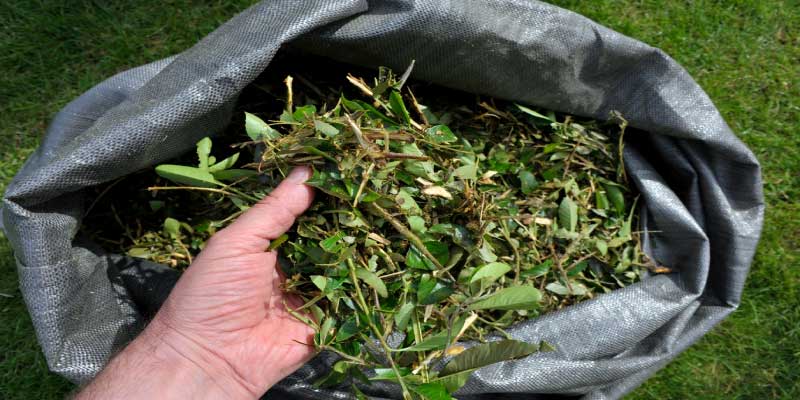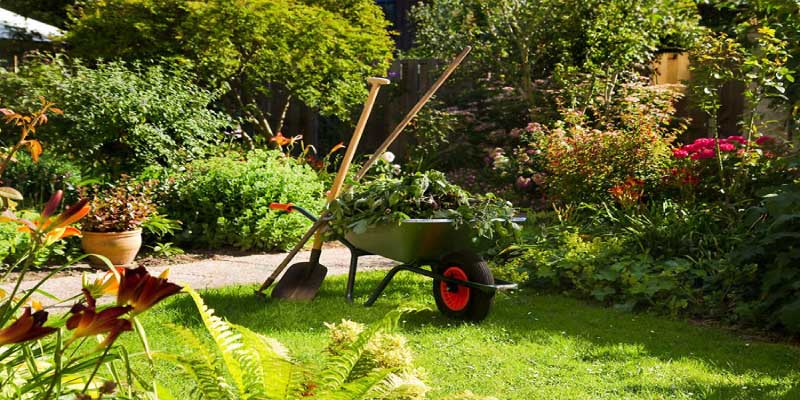Easy Tips on How to Properly Dispose Green Wastes
Working in pest control we see allot of rubish in customers backyards. This can causse increased pest activity. Loose debris and household junk can be a breading ground for pests. In this article we explore some helpful tips on removing green rubbish from your home.
Regardless of whether you’re cleaning up fallen tree branches or doing a yard cleanup, don’t throw out those wastes with your household garbage. Mixing regular trash with green yard waste negatively affects our environment.
Simone Lamb, an environmentalist from Pro Rubbish Removal Brisbane said that “When ‘organic’ material ends up in a landfill, it creates greenhouse gas emissions which is bad for the environment.” Many scientists have proven that this is 100% true. When ‘natural’ waste winds up in a landfill methane emissions can created and are terrible for the environment. Let’s dig more about green waste and how they should be disposed.
Types of green waste
Green waste is any natural debris that can be treated and disposed through eco-friendly techniques. It is made from unusable debris from farms, nurseries, and residential yards. Among these are grass clippings, leaves, spoiled food and rotten fruits.
The term Green waste excludes things like dried leaves, pine straw and feed. Instead, they belong to “brown waste”. It contains high nitrogen which can help fertilize soil. The process of recycling green waste dates all the way back the stone age.
Green Waste Regulations in Australia
The National Waste Policy is a public program created to address waste and asset recuperation in Australia. It provides guidelines for individuals and businesses regarding the activity of disposing of Green and brown waste.
In 2019, the Australian Government Department of Agriculture, Water and the Environment offices dispatched the yearly Australian Plastics Recycling Survey to better understand the utilisation and reusing of plastics in Australia during the 2018–19 monetary year.
The Australian Government Department of Agriculture gathered this information by undertaking a direct review of Australian salvage companies. In addition to, a broad cross examination of Australian Customs recycling practices is currently underway.
This study has been directed in partnership with the Envisage Works and Sustainable Resource Use. This examination began in 1997 and has become a yearly study since 2000. An appraisal of the public’s consumption of plastic bags that you would find at a grocery store was examined in this report.
Moreover, this gives a complete image of the utilisation and stream of reusing plastics in Australia. The overview is an important apparatus for advancement and provides a baseline for improvement.
How to dispose green waste?
Some occupants drop off fall organics like flowers, pumpkins and soil at their nearby “Green market” or “Market Co-op.” Events like the city’s yearly “pumpkin crush” are very popular. Pumpkin smash participants crush pumpkins into fertiliser and distribute it to community members. A large amount of what we discard does not really “disappear.” In using the Pumpkin Smash event as an example we find that green waste can be effectively reuse.
1. Separate green waste materials
Not all farm, household o yard debris is recyclable. The cost of disposing of Green waste can run about half ton, when compared to the disposal and environmental impact of general blended waste. This implies that the responsible separation of green waste is better for everyone as well as the environment.
2. Compost
Making your own fertiliser is unquestionably the most financially savvy and naturally friendly method of discarding garden debris.You can make your own manure from items you can find in your back yard like leaves, grass and bark. Grass alone provides supplements that will more effectively reinforce the decomposition of your compost pile.
Decrease the cumbersomeness of Green waste much as possible when hiring a Waste removal company.
Waste removal organizations bill customers based on volume and the dimension of your debris. The more volume, the more expensive the removal job will be. You should attempt to minimize the space your waste takes up. Cutting up massive things like branches and breaking down heavier items will reduce your cost when hiring a waste removal company.
3. Incinerators for disposing of Green Waste
Incinerators function admirably when disposing of green waste like weeds, yard cuttings and other green waste. They are a solid alternative to fires. An Incinerator burns waste at a high temperature which produces less smoke. Incinerators are a safer option than bonfires and incinerating green waste is legal in many parts of Australia.
Large burns should not be your first choice when disposing of Green waste. But many people continue to dispose of waste by using huge fires. It is acceptable to create a controlled debris burn if the smore doesn’t affect or bother your neighbors. Make a point to check if your nearby government authority has time limitations on when you can light a fire. To lessen fire smoke ensure the waste is as dry as possible.
Australia’s participation in the Paris Climate Agreement is making strides by investing in research and development into the countries green waste disposal strategies. The Australian Department of Agriculture is also pursuing projects that explore the possibility of converting green waste into a viable energy source.
Here are a few items recommend by The Australian Government Department of Agriculture regarding the disposal of Green waste
- Separate green waste materials from other house hold garbage.
- Try to reduce the volume of your garden waste by cutting branches and bagging leaves
- If you use a skip or dumpster do the research on size and make sure you rent the correct size skip or dumpster. Be sure to confirm the dumpster provider will be disposing of your waste responsibly
- Fallen or dead trees and logs can be sold.
- Compost!
- Always check with your local municipality when using Incinerators or bonfires to dispose of waste


